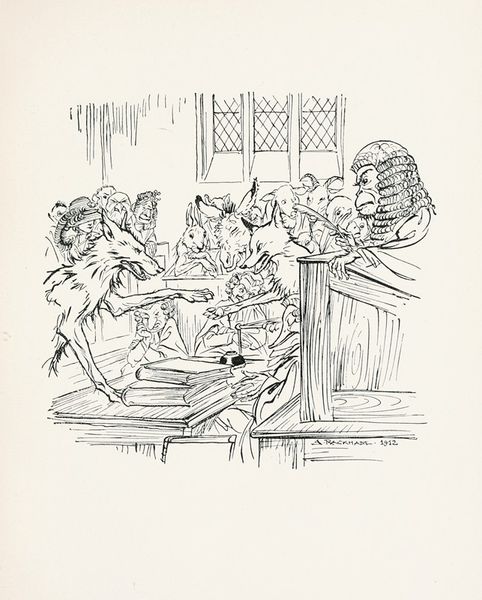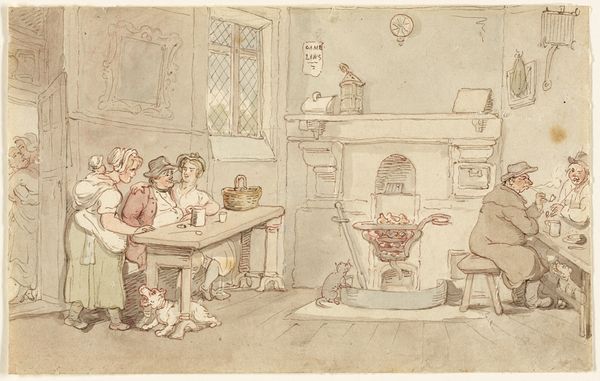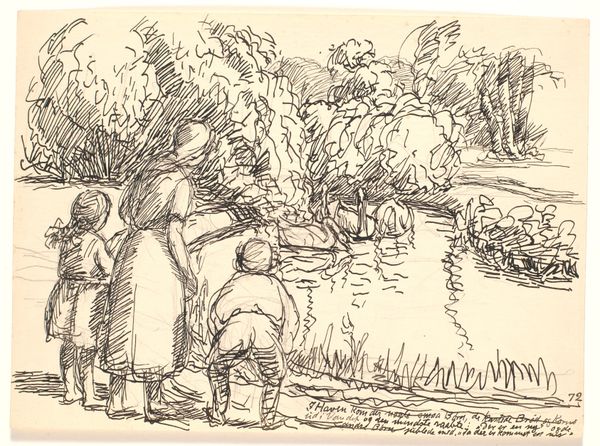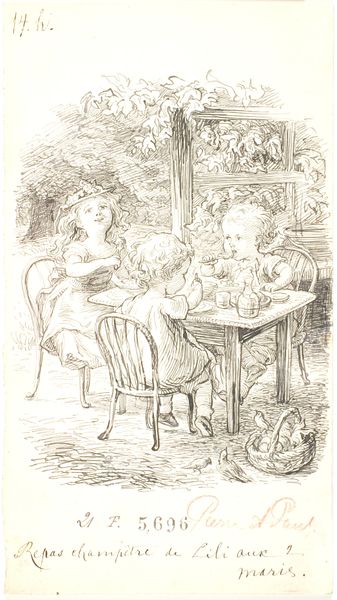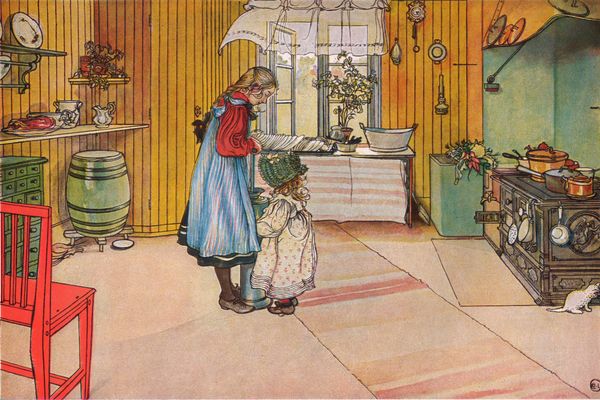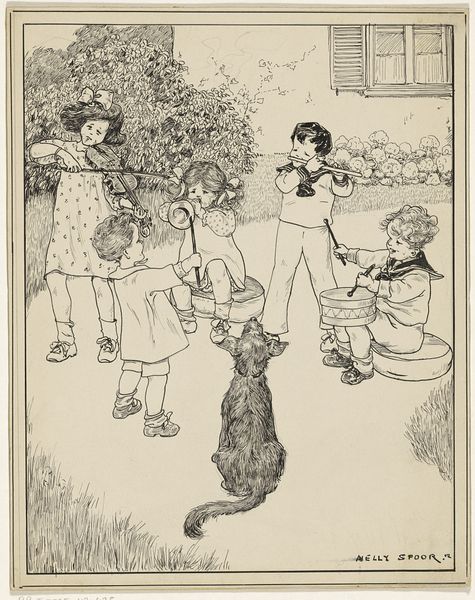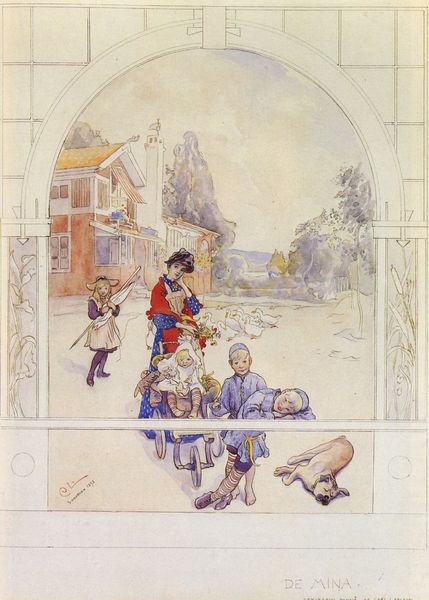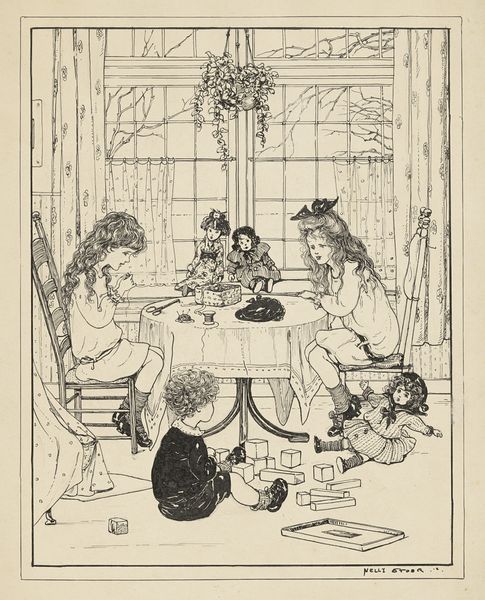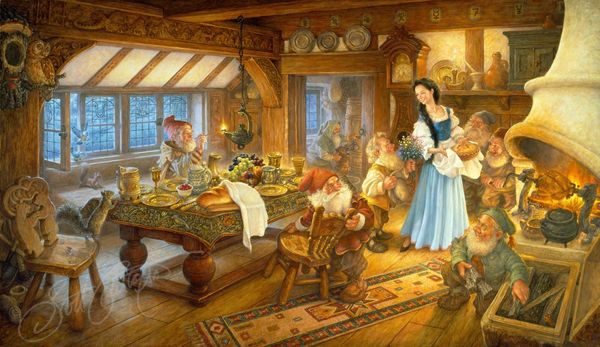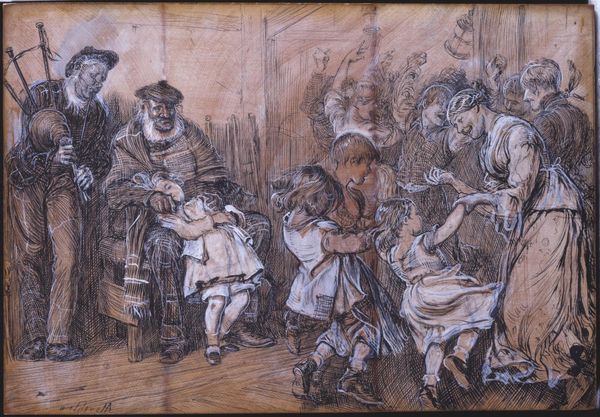
Dimensions: 43 x 32 cm
Copyright: Public domain
Curator: Carl Larsson's "Breakfast under the Big Birch," created in 1895, offers a glimpse into the artist’s family life, a theme recurrent in his oeuvre. Editor: It has such an intimate, candid feel, doesn't it? There's a wonderful lightness to it—the casual composition, the soft watercolors. It speaks of warmth and a sort of nostalgic tranquility. Curator: Larsson, as a prominent figure in the Arts and Crafts movement, deliberately challenged the academic art of his time, choosing everyday scenes. What tools did he use to shape these materials into artwork and what were his working conditions like, particularly as the genre he was using was linked to illustration? Editor: Absolutely. Considering the family, the artwork, and social life are fused in his practice, we could also ask ourselves about gender roles during this time period in a very gendered society. We could view this not merely as an idealized domestic scene, but as a snapshot of bourgeois aspirations, the labor often invisibilized to maintain this vision of idyllic harmony. The serving, the constant nurturing— these roles often disproportionately falling on women to maintain social power balance. Curator: And this painting technique too, this light, quick method, lends itself well to mass production as well! Editor: Precisely! Its accessibility becomes a statement. Rather than being confined to galleries, it becomes domestic decoration, a form of accessible and easily consumed art with social power. Curator: He was very intentional about the distribution of his work as postcards or illustrations. This piece certainly highlights Larsson's savvy approach to integrating art and life, production and personal expression. It gives one quite a bit to think about, no? Editor: Indeed. Considering how it blurs the lines between intimate life and commodity reveals interesting social contexts around artistic production and audience reception even to this day. It offers an invitation to critique broader societal trends embedded in representations of domestic bliss.
Comments
No comments
Be the first to comment and join the conversation on the ultimate creative platform.
